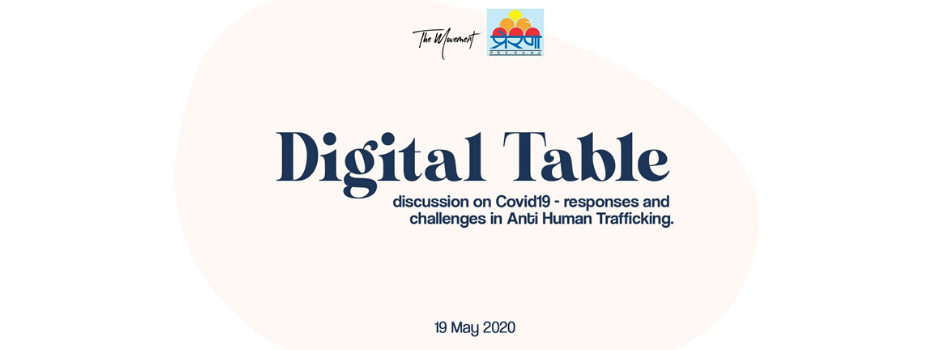
Discussion on AHT and COVID-19 :
Key Takeaways
The Movement and Prerana
The COVID-19 crisis has brought in unprecedented challenges in anti-human trafficking initiatives. To engage in constructive discourse and better equip ourselves for the changing trends and needs of the Anti-trafficking sector, Prerana and The Movement held a digital roundtable on COVID19 on 19th May 2020. The discussion focussed on responses and challenges in anti-human trafficking. Many organizations from Mumbai that provide direct services to victims of human trafficking participated in the discussion. Read more to know the key takeaways from the discussion.
Impact of COVID-19 on Human Trafficking
- The lockdown has caused a break in providing services to children such as psycho-social support. Access to provisions for victims of sex trafficking in shelter homes has also been affected.
- To curb the spread of the virus, all movement (in and out) of child care institutions has been restricted. All restorations have been put on hold and victims who were supposed to be reunited with the families are continuing their stay at the home for over two months now. Since the parents’ visits have been stopped too, the uncertainty is affecting the mental health of the children.
- Victims are likely to experience higher fear and anxiety than before because their future path for rehabilitation is uncertain. The mental health of all victims has been affected and the condition of those with existing issues has been aggravated.
- Many victims on their path of rehabilitation have lost their jobs, shut down their enterprises, and are at the risk of being exploited again.
Shifts in Trends of Trafficking
- As many brothels have closed, many women are moving back to their hometowns. With high economic instability in rural areas now, they are more vulnerable as they have no avenues to earn.
- The women who remain in the brothels are taking loans or advances from brothel owners to survive, thus deepening their risk of exploitation for repayment in the future, and also adding to their existing debt.
- Most of the rescue-activities have been stalled at this time as police are on lockdown duty.
- With higher demand for child pornography, there is a possibility of children being abused to fuel the demand for such content.
Section III – Post-Lockdown Operations
- There is a need to reimagine what employability skills victims might need so that they can cope with the changes in the economy once the crisis subsides.
- Once the lockdown lifts, women from the red-light area and victims of commercial sexual exploitation will face an even higher risk of contracting COVID-19 from customers. Their healthcare must be prioritized.
- There is a possibility of an increase in the number of child marriages in impoverished areas, as parents might look for ways to lessen their financial burden by marrying their daughters off or bringing in a daughter in law to help support them in generating an income.
- Since the rural economy is struggling, there’s a strong possibility of repatriated victims to be re-trafficked from their villages. Source areas must be brought into the discourse on anti0human trafficking.
Section IV – Advocacy
- There is a need to advocate for the conversion of bank accounts of victims of commercial exploitation and women from the red-light areas into the Pradhan Mantri Jan Dhan Yojana so they can receive some financial support from the government.
- There is an urgent need for psychological support for children and care staff at shelter homes to cope with increased stress levels.
- It is important for courts to explore video conferencing as an alternative so that justice for victims isn’t stalled.
- Victim compensation schemes (like Manodhairya) need to be facilitated better upon so that victims get due assistance through the difficult times.
To be or not to be? Questions on motherhood searching answers
The blog post was first published on Dr. Pravin Patkar's Blog 'Expressions'. The post sheds light on the impact and Read more
In the current COVID and lockdown situation, one of the adversely affected communities is the migrant communities. Our Sanmaan project Read more



